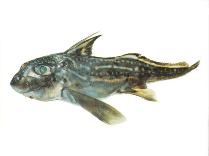http://www.fishbase.org/Summary/speciesSummary.php?genusname=Hydrolagus&speciesname=novaezealandiae ---> http://192.134.151.83/Summary/speciesSummary.php?genusname=Hydrolagus&speciesname=novaezealandiae
http://192.134.151.83/Summary/speciesSummary.php?genusname=Hydrolagus&speciesname=novaezealandiae ---> https://fishbase.mnhn.fr/Summary/speciesSummary.php?genusname=Hydrolagus&speciesname=novaezealandiae
https://fishbase.mnhn.fr/Summary/speciesSummary.php?genusname=Hydrolagus&speciesname=novaezealandiae ---> https://fishbase.mnhn.fr/summary/Hydrolagus-novaezealandiae.html
Hydrolagus novaezealandiae, Dark ghost shark : fisheries

You can
sponsor
this page
Common name (e.g. trout)
Genus + Species (e.g. Gadus morhua)
-

-
About this page
-
Languages
-
User feedbacks
-
Citation
-
Uploads
-
Related species
-


 Dark ghost shark
Add your observation in
Fish Watcher
Upload your
photos
and
videos
Dark ghost shark
Add your observation in
Fish Watcher
Upload your
photos
and
videos
Pictures
|
Google image
 Hydrolagus novaezealandiae
Hydrolagus novaezealandiae
Picture by
SeaFIC
Holocephali (chimaeras) >
Chimaeriformes
(Chimaeras) >
Chimaeridae
(Shortnose chimaeras or ratfishes)
Etymology:
Hydrolagus:
hydro-
, combining form of
hydor
(Gr.), water;
lagos
(Gr.), hare, i.e., “water rabbit,” probably referring to three pairs of tooth plates, which tend to protrude from the mouth like a rabbit’s incisors. (
See ETYFish
)
;
novaezealandiae:
novus
(L.), new, i.e., of New Zealand, in whose waters it occurs. (
See ETYFish
)
.
More on author:
Fowler
.
Environment: milieu / climate zone / depth range / distribution range
Ecology
Marine; bathydemersal; depth range 25 - 950 m (Ref.
26346
), usually 100 - 600 m (Ref.
89422
). Deep-water; 34°S - 47°S
Southwest Pacific: endemic to New Zealand.
Size / Weight / Age
Maturity: L
m
?
range ? - ? cm
Max length : 96.0 cm TL male/unsexed; (Ref.
26346
); common length : 55.0 cm TL male/unsexed; (Ref.
9258
)
Short description
Morphology
|
Morphometrics
Anal
spines
: 0;
Anal
soft rays
: 0. Dark grey dorsally, with silver-white markings, pale silver-grey ventrally (Ref.
26346
).
Inhabits the outer continental shelf and upper slope (Ref.
26346
). Feeds on crustaceans, shellfish, worms and small fish (Ref.
26346
). Maximum length 87 cm without tail filament (Ref.
26346
), assumed to have 96 cm TL. Marketed as fillets (Ref.
26346
).
Life cycle and mating behavior
Maturity
|
Reproduction
|
Spawning
|
Eggs
|
Fecundity
|
Larvae
Oviparous, young hatch from egg case at about 9-12 cm (Ref.
26346
).
Cox, G. and M. Francis
, 1997. Sharks and rays of New Zealand. Canterbury Univ. Press, Univ. of Canterbury. 68 p. (Ref.
26346
)
IUCN Red List Status (Ref.
130435
)
Least Concern (LC)
; Date assessed:
20 June 2017
CITES
Not Evaluated
Not Evaluated
Threat to humans
Harmless
Human uses
Fisheries: minor commercial
FAO - Fisheries:
landings
; Publication:
search
| FIRMS -
Stock assessments
|
FishSource
|
Sea Around Us
More information
Countries
FAO areas
Ecosystems
Occurrences
Introductions
Stocks
Ecology
Diet
Food items
Food consumption
Ration
Common names
Synonyms
Metabolism
Predators
Ecotoxicology
Reproduction
Maturity
Spawning
Spawning aggregation
Fecundity
Eggs
Egg development
Age/Size
Growth
Length-weight
Length-length
Length-frequencies
Morphometrics
Morphology
Larvae
Larval dynamics
Recruitment
Abundance
BRUVS
References
Aquaculture
Aquaculture profile
Strains
Genetics
Electrophoreses
Heritability
Diseases
Processing
Nutrients
Mass conversion
Collaborators
Pictures
Stamps, Coins Misc.
Sounds
Ciguatera
Speed
Swim. type
Gill area
Otoliths
Brains
Vision
Tools
E-book
|
Field guide
|
Length-frequency wizard
|
Life-history tool
|
Point map
|
Classification Tree
|
Catch-MSY
|
Special reports
Check for Aquarium maintenance
|
Check for Species Fact Sheets
|
Check for Aquaculture Fact Sheets
Download XML
Summary page
|
Point data
|
Common names
|
Photos
Internet sources
AFORO (otoliths) |
Aquatic Commons
|
BHL
|
Cloffa
|
BOLDSystems
|
Websites from users
|
Check FishWatcher
|
CISTI
|
Catalog of Fishes
:
genus
,
species
|
DiscoverLife
|
ECOTOX
| FAO - Fisheries:
landings
; Publication:
search
|
Faunafri
| Fishipedia |
Fishtrace
| GenBank:
genome
,
nucleotide
|
GloBI
|
Google Books
|
Google Scholar
|
Google
| IGFA World Record |
MitoFish
|
Otolith Atlas of Taiwan Fishes
|
PubMed
| Reef Life Survey | Socotra Atlas |
Tree of Life
| Wikipedia:
Go
,
Search
| World Records Freshwater Fishing |
Zoological Record
Estimates based on models
Preferred temperature (Ref.
123201
): 8 - 13.7, mean 10.8 °C (based on 62 cells).
Phylogenetic diversity index (Ref.
82804
): PD
50
= 0.5000 [Uniqueness, from 0.5 = low to 2.0 = high].
Bayesian length-weight: a=0.00240 (0.00122 - 0.00472), b=3.14 (2.96 - 3.32), in cm total length, based on LWR estimates for this species & (Sub)family-body (Ref.
93245
).
Trophic level (Ref.
69278
): 3.5 ±0.46 se; based on food items.
Resilience (Ref.
120179
): Low, minimum population doubling time 4.5 - 14 years (Assuming Fec <100).
Prior r = 0.28, 95% CL = 0.16 - 0.49, Based on 1 stock assessment.
Fishing Vulnerability (Ref.
59153
): High vulnerability (58 of 100).
Climate Vulnerability (Ref.
125649
): Very high vulnerability (76 of 100).
Price category (Ref.
80766
):
High
.
Nutrients (Ref.
124155
): Calcium = 11.4 [3.1, 38.0] mg/100g; Iron = 0.389 [0.134, 0.967] mg/100g; Protein = 15.9 [10.4, 19.0] %; Omega3 = 0.266 [0.100, 0.709] g/100g; Selenium = 18 [5, 59] μg/100g; VitaminA = 6.22 [1.30, 27.04] μg/100g; Zinc = 0.326 [0.172, 0.627] mg/100g (wet weight);
Back to Search
Random Species
Back to Top
Accessed through:
Not available
FishBase mirror site :
localhost
Page last modified by :
mrius-barile
- 20 July 2016
Fatal error
: Uncaught ArgumentCountError: Too few arguments to function checkEcotox(), 1 passed in /var/www/html/summary/speciessummary.php on line 2304 and exactly 3 expected in /var/www/html/includes/speciessummary.lib.php:2579 Stack trace: #0 /var/www/html/summary/speciessummary.php(2304): checkEcotox() #1 {main} thrown in
/var/www/html/includes/speciessummary.lib.php
on line
2579
|